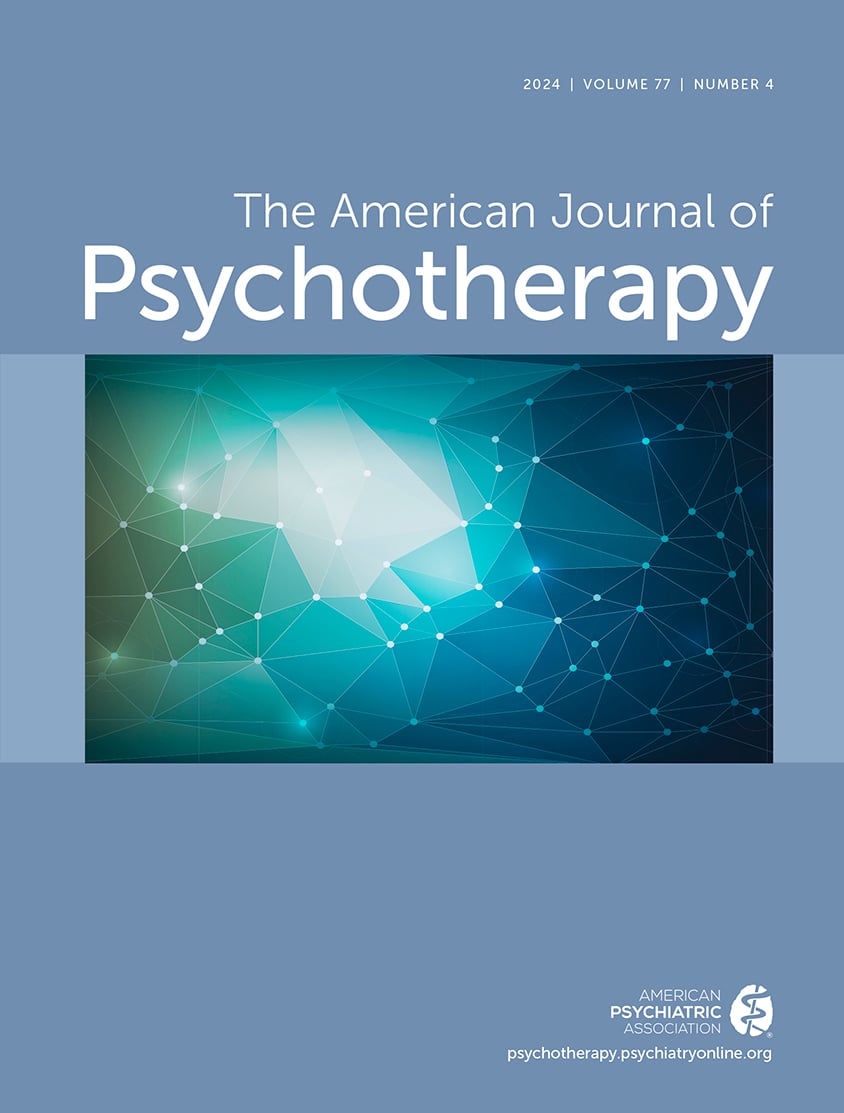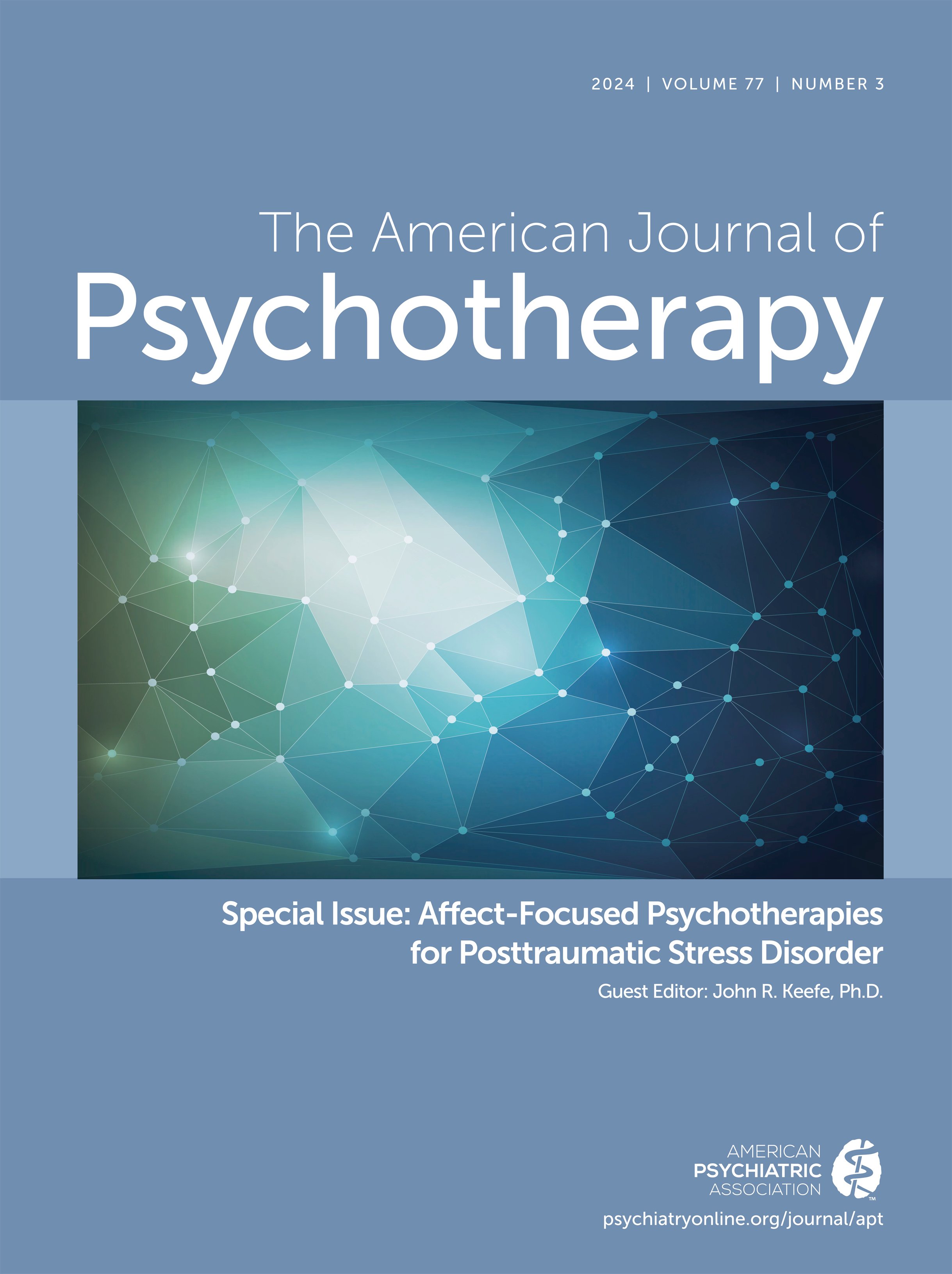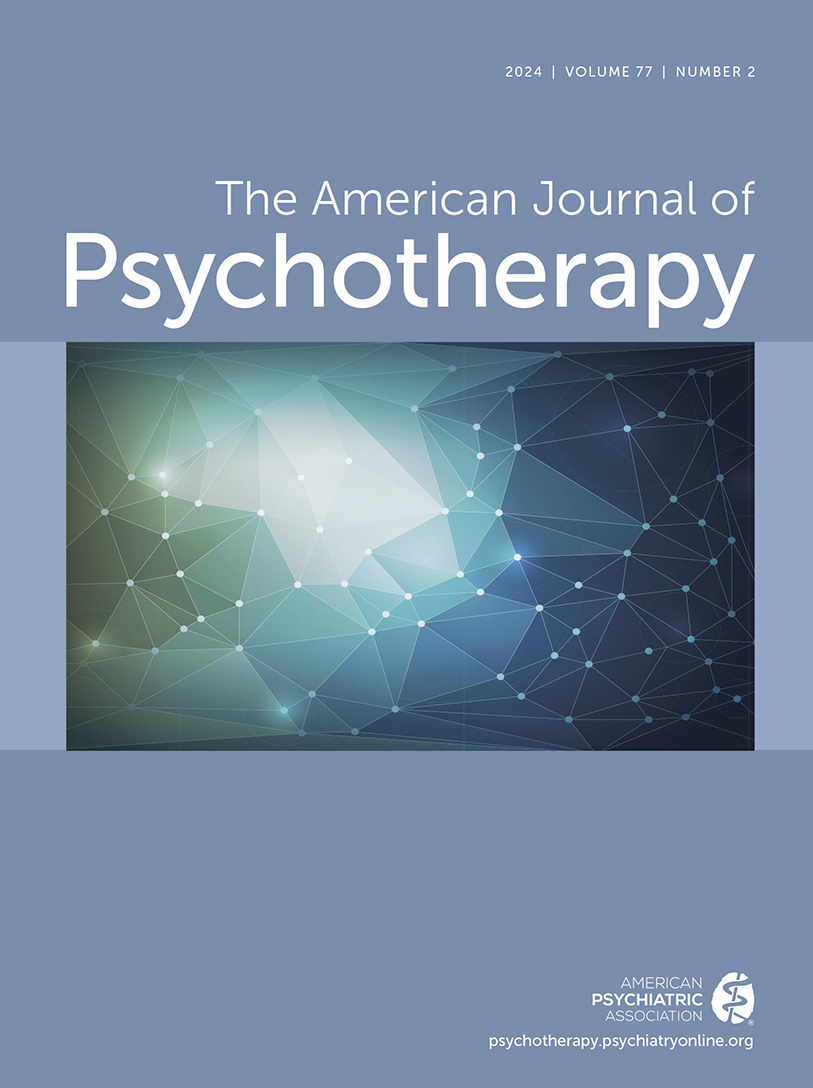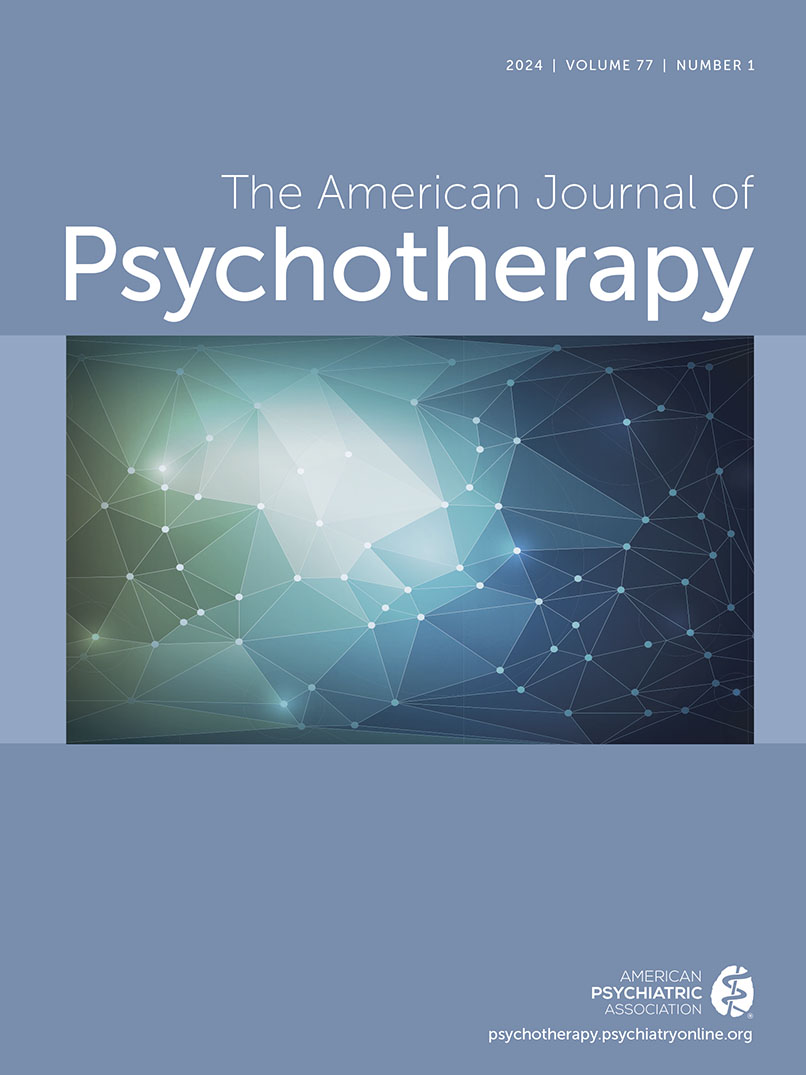American Journal of Psychotherapy
- Volume 45
- Number 4
- October 1991
Editorial
Publication date: 01 October 1991
Pages463–466https://doi.org/10.1176/appi.psychotherapy.1991.45.4.463Articles
Publication date: 01 October 1991
Pages467–482Psychotherapy trainees often hold implicit models of pathogenesis and cure, which can distort their understanding of a supervisor’s suggestions. We identify two such models, the “passive-learning” model and the “cathartic” model. Recognizing such models ...
https://doi.org/10.1176/appi.psychotherapy.1991.45.4.467Publication date: 01 October 1991
Pages483–498Self psychology helps to understand and treat family systems characterized by narcissistic deficits. In narcissistic systems, members function pathologically as selfobjects to each other. They have certain characteristics. Becoming a healthy selfobject to ...
https://doi.org/10.1176/appi.psychotherapy.1991.45.4.483Publication date: 01 October 1991
Pages499–510Psychotherapy with adolescents can be imperiled when treatment challenges the family’s heretofore stable image and understanding of the patient. In parallel fashion, adult psychotherapy can fail when it undermines a dystonic but familiar self-image. ...
https://doi.org/10.1176/appi.psychotherapy.1991.45.4.499Publication date: 01 October 1991
Pages511–526Supervision in psychotherapy is supposed to provoke strong feelings and to actualize old patterns of relating to authority figures. Dreams of supervised subjects contained more references to authority persons and were richer in emotional contents than ...
https://doi.org/10.1176/appi.psychotherapy.1991.45.4.511Publication date: 01 October 1991
Pages527–543The dream of a child while undergoing psychotherapy is conceptualized in the manner of a posttraumatic event. Reasons for this conceptualization include the limited and varying cognitive capacities of a child to understand a dream and the heightened ...
https://doi.org/10.1176/appi.psychotherapy.1991.45.4.527Publication date: 01 October 1991
Pages544–553This article presents the diagnosis of neurasthenia that emphasizes excessive irritability and outbursts of anger as the most salient features. Such a concept of neurasthenia has been popular in Yugoslavia because it provided an explanation for this form ...
https://doi.org/10.1176/appi.psychotherapy.1991.45.4.544Publication date: 01 October 1991
Pages554–565Practical guidelines for working with strictly religious patients are presented: (1) cooperation with the patient’s spiritual mentor to reduce the patient’s resistance, (2) examination of the therapist’s own religious attitudes to modify ...
https://doi.org/10.1176/appi.psychotherapy.1991.45.4.554Publication date: 01 October 1991
Pages566–575The use of drama therapy in the rehabilitation of schizophrenic patients may be considered a combination of psychotherapy and social-skills training that allows patients to obtain a greater understanding of their emotional selves in relation to others. ...
https://doi.org/10.1176/appi.psychotherapy.1991.45.4.566Publication date: 01 October 1991
Pages576–593Solutions to the ontological question or Being-question from philosophy, literature, and psychopathology are compared and contrasted. The crucial problem that comes into focus from this study is that of validation. Even in clinical work it is sometimes ...
https://doi.org/10.1176/appi.psychotherapy.1991.45.4.576Case Report
Publication date: 01 October 1991
Pages594–603The intrusion of political reality into the psychotherapy of an Arab patient by a Jewish therapist in Israel during the Intifada interferes with the dialogue, and the transferential and countertransferential processes. Keeping the therapy free of ...
https://doi.org/10.1176/appi.psychotherapy.1991.45.4.594Book Review
Publication date: 01 October 1991
Pages604–605https://doi.org/10.1176/appi.psychotherapy.1991.45.4.604Publication date: 01 October 1991
Pages605–606https://doi.org/10.1176/appi.psychotherapy.1991.45.4.605Publication date: 01 October 1991
Pages606–607https://doi.org/10.1176/appi.psychotherapy.1991.45.4.606Publication date: 01 October 1991
Pages607–608https://doi.org/10.1176/appi.psychotherapy.1991.45.4.607aPublication date: 01 October 1991
Pages609–610https://doi.org/10.1176/appi.psychotherapy.1991.45.4.609Publication date: 01 October 1991
Pages610–611https://doi.org/10.1176/appi.psychotherapy.1991.45.4.610Publication date: 01 October 1991
Pages611–612https://doi.org/10.1176/appi.psychotherapy.1991.45.4.611Publication date: 01 October 1991
Pages613–614https://doi.org/10.1176/appi.psychotherapy.1991.45.4.613Publication date: 01 October 1991
Pages617–618https://doi.org/10.1176/appi.psychotherapy.1991.45.4.617Publication date: 01 October 1991
Pages618–619https://doi.org/10.1176/appi.psychotherapy.1991.45.4.618Publication date: 01 October 1991
Pages619–620https://doi.org/10.1176/appi.psychotherapy.1991.45.4.619Publication date: 01 October 1991
Pages620–621https://doi.org/10.1176/appi.psychotherapy.1991.45.4.620Notes and Comments
Abstracts
Publication date: 01 October 1991
Pages623–624https://doi.org/10.1176/appi.psychotherapy.1991.45.4.623Publication date: 01 October 1991
Pages625–628https://doi.org/10.1176/appi.psychotherapy.1991.45.4.625Index
Publication date: 01 October 1991
Pages629–633https://doi.org/10.1176/appi.psychotherapy.1991.45.4.629Past Issues
View Issues Archive
Vol. 77 | No. 4

Vol. 77 | No. 3

Vol. 77 | No. 2
